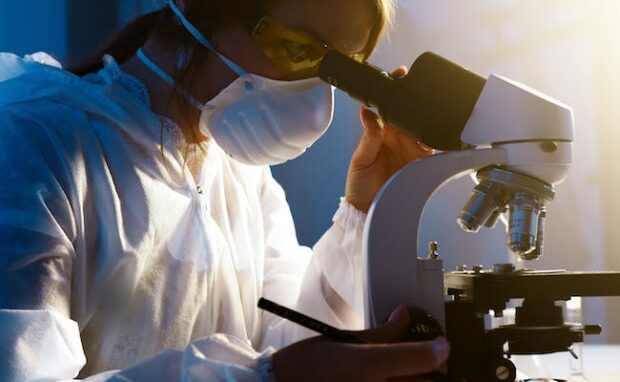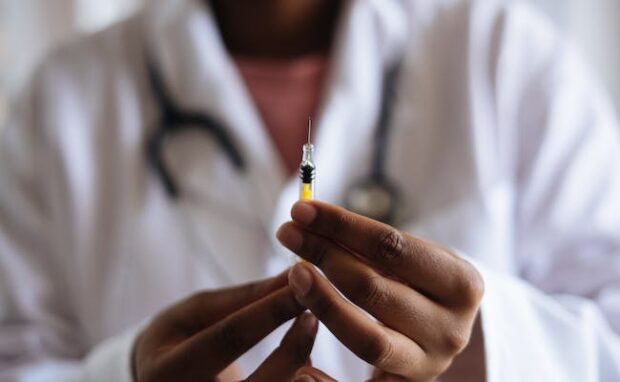Artificial DNA to create designer proteins
Multiple university researchers developed a new DNA version containing six nucleotides instead of four. We could use them to make new, never-before-seen proteins, which are the building blocks of life. As a result, scientists are excited about its potential, from personalized medicine to groundbreaking materials.
You may not notice, but the discovery of new materials has significantly transformed the world. For example, creating plastic from fossil fuels sparked numerous innovations, such as computers and life-saving medicines. Producing new proteins could have a similar impact in our lifetimes. For example, it could make drugs for incurable diseases.
This article will discuss how university researchers developed artificial DNA to create designer proteins. Then, I will share other projects that made new materials.
How does artificial DNA work?

Dong Wang, Ph.D., a professor at Skaggs School of Pharmacy and Pharmaceutical Sciences at UC San Diego, and his team used a synthetic DNA system called AEGIS to make artificial proteins. The acronym stands for Artificially Expanded Genetic Information System.
Their project expands the “vocabulary of life” by adding new “letters” to the genetic code. Deoxyribonucleic Acid or DNA consists of four nucleotides: Adenosine (A), Cytosine (C), Guanine (G), and Thymine (T).
These substances form DNA, which is the building block of life, hence the term “vocabulary of life.” Wang and his team created synthetic nucleotides P and Z by mimicking how natural ones work.
The researchers discovered Z and P have the same shape and size as natural nucleotides, letting them fit into a DNA helix without disrupting its structure. Consequently, enzymes could read and copy synthetic nucleotides like natural ones.
“Life on Earth is amazingly diverse with just four nucleotides, so imagine what we could do with more,” senior study author Dong Wang said. “By expanding the genetic code, we could create new molecules that have never been seen before and explore new ways of making proteins as therapeutics.”
You may also like: First CRISPR medicine now in the US
“This is a remarkable demonstration of how robust and adaptable the biological machinery is. By mimicking the natural shape of DNA, our synthetic letters can sneak in and be used to make new proteins.”
Artificial DNA could lead to amazing possibilities. Imagine using that to produce proteins that target tumors or bacteria that make eco-friendly biofuels! Interesting Engineering says, “It holds the promise of ushering in a new era of biological design.
“These new proteins could have applications in medicine, biotechnology, and bioengineering,” stated Wang. “We are only scratching the surface of what we can do with artificial DNA.”
Other recent discoveries

Artificial intelligence allowed other researchers to create unprecedented medicines. For example, Harvard Medical School and the University of Oxford experts developed an AI tool called EVEscape to create vaccines.
They augmented the mutation prediction feature of a prior tool called EVE to produce this new tool. “We’re taking biological information about how the immune system works and layering it on our learnings from the broader evolutionary history of the virus,” co-lead author Nicole Thadani.
The experts tried it on COVID-19, and it processed thousands of new SARS-CoV-2 variants produced weekly and identified the most problematic ones. “By rapidly determining the threat level of new variants, we can help inform earlier public health decisions,” said co-lead author Sarah Gurev.
The Harvard Gazette said EVEscape’s other essential application is evaluating vaccines and therapies against current and future viral variants. Consequently, it can help scientists design effective treatments that can fight viruses.
An AI medical firm called LabGenius used artificial intelligence for a similar purpose. It created a namesake artificial intelligence tool that facilitates the creation of synthetic antibodies.
You may also like: Scientists create muscles for robots
The conventional process requires protein designers to sift through millions of potential combinations of amino acids. Next, they must test them and adjust variables until they produce an effective result.
LabGenius expedites this process by choosing more than 700 initial options from 100,000 potential antibodies. Afterward, it designs, builds, and tests them automatically.” Meanwhile, humans oversee the process by moving samples from one machine to another.
It learns from experimental results, increasing the chances of producing better results. As a result, it is significantly more efficient than human protein designers.
Conclusion
Several university researchers developed artificial DNA to create designer proteins. They made two synthetic nucleotides that function like regular ones.
Enzymes also can also read and reproduce synthetic information like conventional nucleotides. As a result, it could help us create never-before-seen materials and substances.
Learn more about the artificial DNA study by reading its Nature Communications webpage. Moreover, check out the latest digital tips and trends at Inquirer Tech.